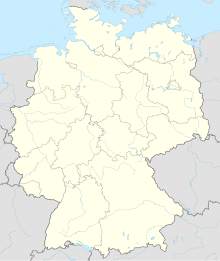| Siege of Dorsten | |||||||
|---|---|---|---|---|---|---|---|
| Part of the Thirty Years' War (Hessian War) | |||||||
 The Town of Dorsten in 1641 by Matthäus Merian. | |||||||
| |||||||
| Belligerents | |||||||
|
|
| ||||||
| Commanders and leaders | |||||||
|
|
| ||||||
| Strength | |||||||
| 2,000 (infantry, cavalry, artillery), 250 men of the Hessian 1st relief force from Haltern, 2nd relief force incl. 3,000 Swedish cuirassiers withdrawn from Wolfenbüttel (too late for battle) |
12 regiments of infantry, 10 regiments of cavalry 30 pieces of heavy artillery) | ||||||
| Casualties and losses | |||||||
| 1,350 killed and wounded | unknown | ||||||
Location within North Rhine-Westphalia | |||||||
In the siege of Dorsten (German: Belagerung von Dorsten), an Imperial force under Melchior von Hatzfeldt besieged the Hessian garrison in the town of Dorsten from 16 July 1641 to 19 September 1641 during the Thirty Years' War. The garrison capitulated on 18 September 1641 and moved out of the town the following day.
According to a judgement by the Vienna Supreme Court (Wiener Hofgericht), Hesse-Cassel had to cede Upper Hesse, which included the University of Marburg, to Hesse-Darmstadt. In return for this substantial loss, in the Treaty of Werben on 22 August 1631, King Gustavus Adolphus of Sweden promised to grant Hesse-Cassel various territories in Westphalia including parts of the Prince-Bishopric of Münster (Hochstift Münster) and the Vest Recklinghausen (governed by the Electorate of Cologne), if he were victorious in the Thirty Years' War.
On 9 February 1633, Hesse-Cassel captured Dorsten without resistance from the Electorate of Cologne. In the following years, it was turned into the strongest fortress in the region by the Hessian Colonel Dalwig and by Johann Adriansch. A first attempt to recapture it by Johann von Götz failed in 1636.



